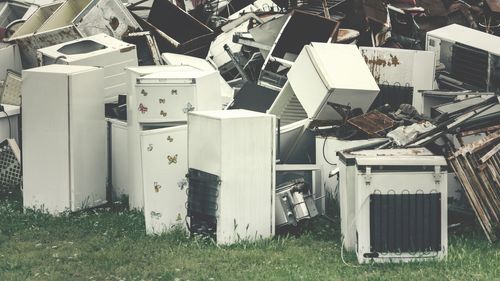Your grandparents’ old refrigerator helped contribute to a huge amount of warming in the Arctic in the latter half of the 20th century.
A new study has found ozone-depleting substances (ODS), synthetic chemicals that were previously used in refrigerants and propellants for aerosol sprays, could be responsible for half of Arctic warming and sea ice loss between 1955 and 2005. On top of that, this nasty brigade of chemicals is also to blame for a third of all global warming during that period.
The new study by Columbia University can be found in the journal Nature Climate Change.
The research used climate simulations both with and without the emission of ODS that began in the 1950s. Without ODS, the models showed that average polar cap annual warming from 1955 to 2005 was around 0.82°C. Once they took into account the presence of ODS, that figure was upped to 1.59°C, around half of the rise seen since pre-industrial times.
ODS, such as chlorofluorocarbons (CFCs) and hydrochlorofluorocarbons (HCFCs), were developed in the 1920s and ‘30s and became popularly used as refrigerants, solvents, and propellants. As their name makes clear, ODS can erode the ozone layer of Earth’s atmosphere after they are transported into the stratosphere, causing the layer to diminish and a “hole” to form. This allows more of the Sun’s UV radiation to leak in and the planet gently warms up. They also act as extremely potent greenhouse gases, further adding to the atmospheric warming.
While much of the damage has been done, ODS were banned in 1987 under the Montreal Protocol. The Protocol, which regulates the production and consumption of nearly 100 ODS, is to date the only UN treaty ever that has been ratified by every UN member state on Earth. It's also considered one of the most successful multilateral agreements ever undertaken and has directly resulted in an outstanding recovery of the planet's ozone layer.
Nowadays, the biggest environmental threat and the strongest driver of climate change is greenhouse gases like carbon dioxide and methane, however, the planet’s success at curbing ODS use shows that big changes are possible through policy change and collective action. In this sense, the researchers argue that their study should be considered a “feel good” success story, not your typical doom-and-gloom environment story.
“Climate mitigation is in action as we speak because these substances are decreasing in the atmosphere, thanks to the Montreal Protocol,” Lorenzo Polvani, lead author of the study and a professor in Columbia’s Department of Applied Physics and Applied Mathematics, said in a statement.
“In the coming decades, they will contribute less and less to global warming. It’s a good news story.”




